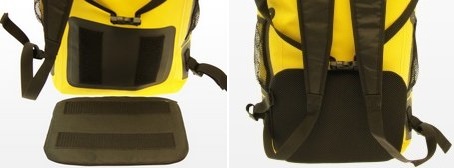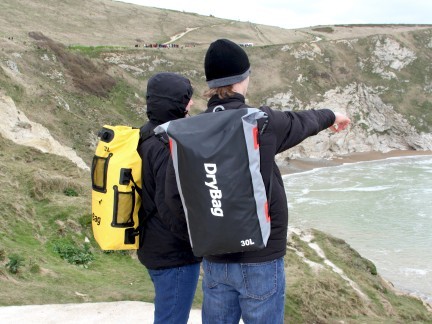There are many words for what we call 'a rucksack': backpack, knapsack, packsack... The word 'backpack' was coined in the US in the 1910s, while the word 'rucksack' is a German loanword mainly used in the UK and in the US Army (from German 'der Rücken' which means 'the back', and 'sack' for bag.
The prototype of back pack was used in ancient times, when the hunters had to transport large games and preys. They cut the carcass, wrapped the meat into animal skin, sewn together by intestines and put such a 'sack' onto their shoulders. Later such way of transporting was used for other purposes as well.
On the 19th of September in 1992 researchers found perfectly preserved body of a prehistoric man on Similaun mountain in the Alps. On his back, he carried a leather bag on the U-shaped frame made of two vertical hazel bars joint together with 2 horizontal larch bars for stiffness. The belongings in the backpack were considered to date back 2700 ВС. Thus, the oldest ever found rucksack is almost 5000 years old.
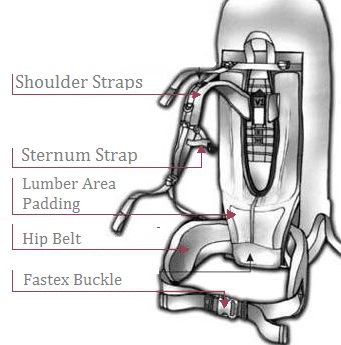
Parts of the rucksack:
Sack
The main bulk of the rucksack, which holds the load while transportation. The sack can be divided into several departments. Partitions can be vertical (in small rucksacks) and horizontal (in the bigger ones). The sack can be equipped with various pockets inside and outside.
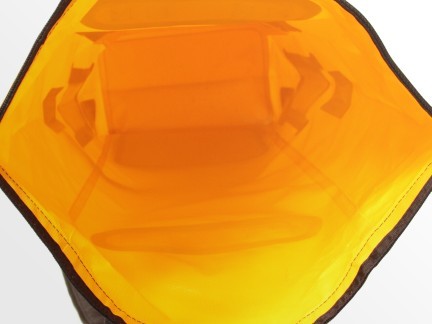
Suspension system
The load-supporting system of all kinds of straps. The suspension system can be fixed or adjustable.Shoulder straps
Shoulder straps consist of 2 parts:
Upper: lies on the shoulder and bears the base load. It's usually wide and thick - padded with soft material, in order to spread the load and prevent shoulder from getting hurt.
Lower: is a piece of cord, one end is sewn into the bottom of the rucksack and the other end is put through a buckle in the upper part of the strap.
Sternum strap
Elastic straps with a fastex fastener which are attached to shoulder straps. The purpose is to prevent the rucksack from dangling and the straps from falling off the shoulders, especially while fast moving. Usually used on rucksacks for running, biking, skating, etc.

Hip Belt
Hip Straps are 2 soft 'wings' joined with a buckle or a fastex, meant to spread the load on your legs. The hip belt straddles your 'iliac crest' (two prominent bones on the front of your hips). Some hip belts even have pockets for easy access to snacks, camera, GPS or similar necessary items.
Compression Straps
Compression Straps are those straps which crisscross the sides of the rucksack. Their main purpose is to compress the contents of the backpack, in other words, to squish the load closer to the pack frame, for better balance and thus easier weight transfer. They are also often used for attaching items like rolled sleep bag, tent or rug to the outer surface of the rucksack.
Top
There can be different option for a top lid. Simple rucksacks have just a zip, touristic backpacks feature a top pocket offering an extended capacity. Waterproof daypacks suggest a roll-top, which is folded down over the strong black strip of rigid tube and than fastened from the 2 sides, so that water could not get into the sack.
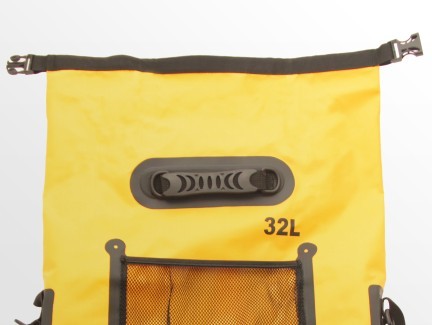
Cushion
Some rucksacks feature an additional detachable cushion to add comfort for lumbar area. It can be removed and used, for instance, for sitting on the ground.
